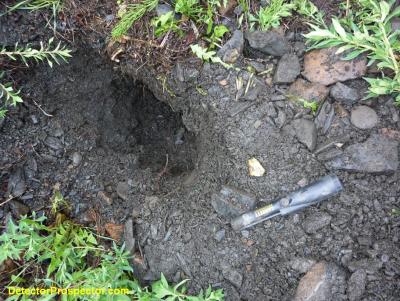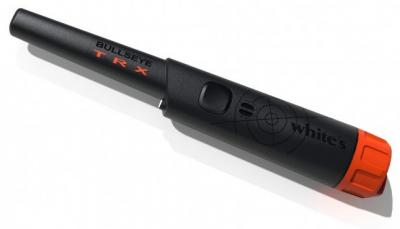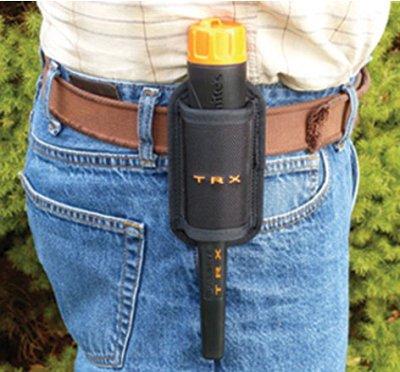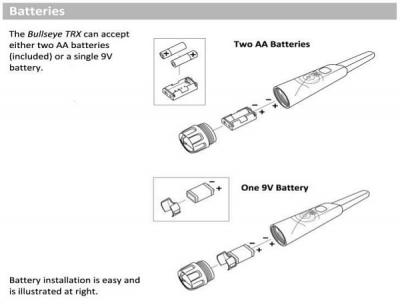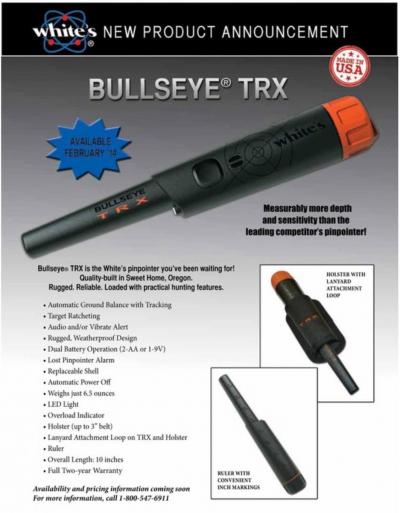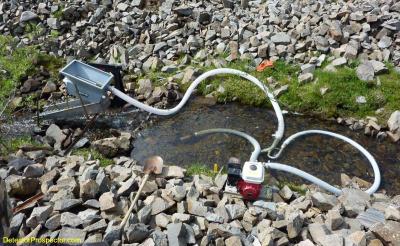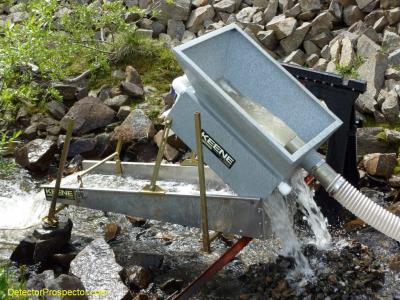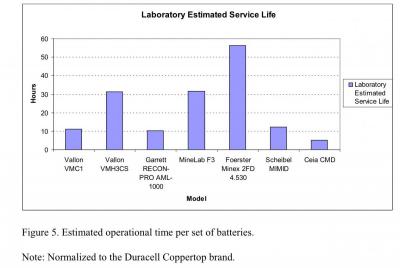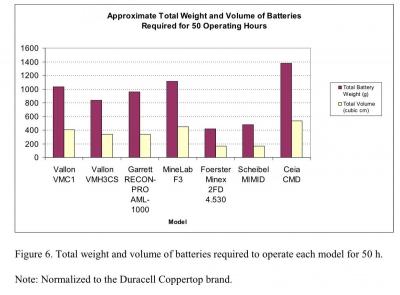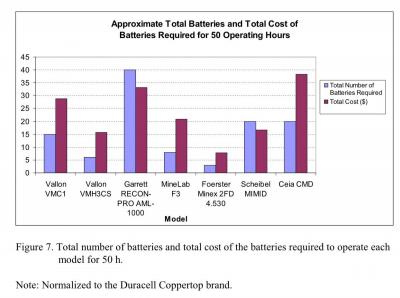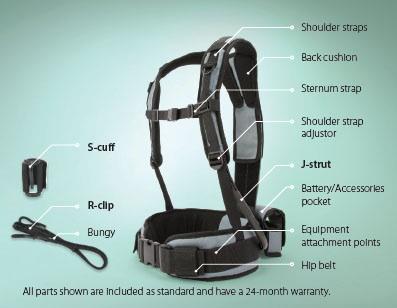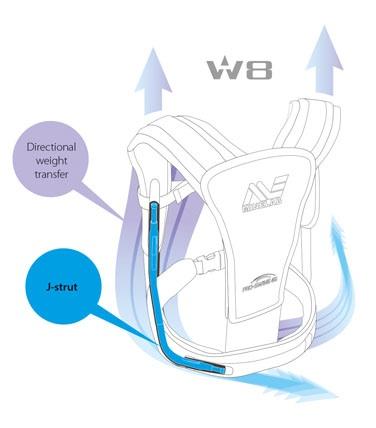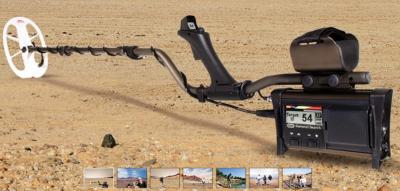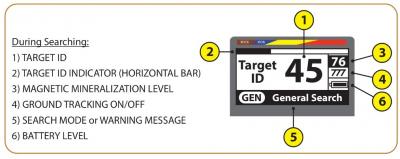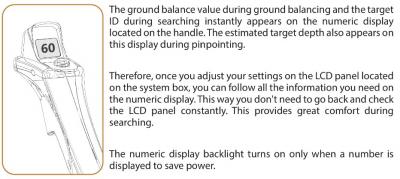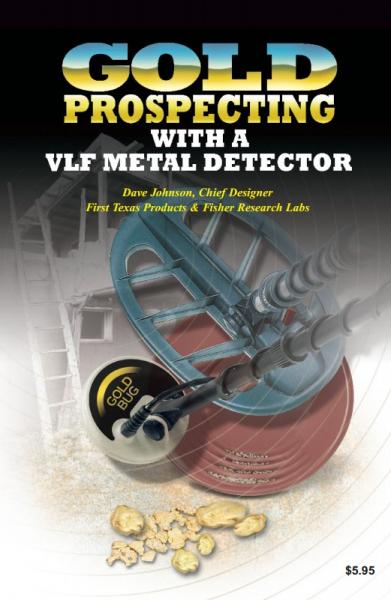-
Posts
19,591 -
Joined
Content Type
Forums
Detector Prospector Home
Detector Database
Downloads
Everything posted by Steve Herschbach
-
Yes the Gold Bug 2 can find small gold but you have to be right on it. You have been asking about the Hatcher Pass area and large flake and pickers are not exactly common there. Flyspeck gold is more like it. It is not the detectors, it is the lack of detectable gold in the area that is going to frustrate you.
-
You can't detect color - you need little nuggets. Realistically if the creeks are your goal packing a pan or the sluice is going to be more effective. The stuff in the picture above is a challenge in low mineral ground and near impossible in hot mineralized ground. The MXT or GMT would be very instructive for you to borrow and use before buying anything. There is a bit of a myth going around that detectors are the easy way to find gold. Nothing could be farther from the truth. You can walk all over gold all day long with a detector a pan would reveal in minutes. And Hatcher Pass is the place for exactly that to happen. Not trying to discourage you but unrealistic expectations is a major reason people try detecting then give up on it. If Hatcher Pass were a great place to detect gold you can bet I would have done lots more of it!
-
The Gold Bug 2 is the one detector that I hardly think of as a detector. It is a prospecting tool. It does have a learning curve, but people like myself that have mastered the Gold Bug 2 consider it indispensable. Like anything else it just takes some practice. Do not be afraid to tone the settings down! If there is any thought at all of doing anything else other than prospect than a Gold Bug Pro could be the better answer. Most mid-frequency detectors are all around units that you can also use for prospecting. The Gold Bug Pro is like a prospecting detector you can use for other stuff, if you get my drift.
-

Metal Detector Set Off By Pinpointer
Steve Herschbach replied to fredmason's topic in Metal Detector Advice & Comparisons
Holy #%&@! Good for Bob. That's a monster!! -

White's TDI Testing Results
Steve Herschbach replied to Rick Watkins's topic in White's Metal Detectors
Very nice Rick! Thanks for posting. I like the bullets and casings also. You know as long as you are finding that stuff the area has not been detected very well. Digging bullets can be annoying but it is not as annoying as being someplace you can't find any because somebody else dug them all along with the gold. -

Metal Detector Set Off By Pinpointer
Steve Herschbach replied to fredmason's topic in Metal Detector Advice & Comparisons
Hi JP, I will have all three so will put that to the test. I have been using my Garret Pro Pointer out of habit but will switch to the Pro Find in a heartbeat if true. Thanks for that tip! -

Metal Detector Set Off By Pinpointer
Steve Herschbach replied to fredmason's topic in Metal Detector Advice & Comparisons
Metal detectors like items with holes in the middle, because the eddy current runs in a circle like on a little racetrack. Metal detector search coils are specially designed to carry current in circles. The little coil winding in a pinpointer is accidentally one of the most detectable items you can lay hands on. It has nothing to do with it being on or off unfortunately. I was using my pinpointer yesterday with my DFX and even with a VLF you need to be aware of this. I was running in all metal and the detector was signaling a bit on each left swing until I moved the pinpointer back on my belt. I will have to design a hat with a pinpointer holder on the back and get big bucks on Shark Tank for my brilliant invention! -

White's TDI Testing Results
Steve Herschbach replied to Rick Watkins's topic in White's Metal Detectors
Excellent Rick! Always good to find gold, and sure helps with faith in a new detector. Lots of people get a new machine and if gold is not found soon lose all faith in it and it ends up for sale. Not the machines fault of course but just the way people often are. So I am glad the TDI is working out for you. Hope we get to see pictures at some point! Thanks again for the invite. Wish I could have but family stuff is getting priority at the moment. -
Well, true story is I had big plans to chase small gold with the GPX but the fact is I could not tear myself away from looking for big gold long enough to do it. It seems a bit like hunting mice with an elephant gun. That said I think it would be worth your while to give it a go. You really never know unless you try and you already have the detector. Nice photos, thanks for posting! The Hatcher Pass area was always a favorite of mine. Very kind offer you made also.
-

New White's Bullseye Trx Pinpointer
Steve Herschbach replied to Steve Herschbach's topic in White's Metal Detectors
Hi Fred, A quick push of the button "grabs" the ground balance. You can't turn the tracking off but remember this is not a classic metal detector and chances are you do not want to turn it off anyway. Tracking out targets is not likely to be an issue so no reason. Ratcheting is the practice of getting near the target, pressing the pinpoint button on a detector to reset signal, and then getting a sharper pinpoint signal. You ratchet the signal down until right on target. This can be done with the TRX but is probably not necessary in most cases. I never park hunt without a pinpointer. It ups my efficiency level ten-fold. You do not need a pinpointer nugget detecting per se but I always have one along with my GPX 5000 and a big coil. I still get tricked on elongated trash targets a lot and find I am digging just off target. The pinpointer has saved me digging to China many times locating a nail in the side of the hole. I also use the pinpointer if I am approaching any large target in the bottom of a deep hole. The pinpointer lets me know I am close and might save putting a pick tip into a very valuable nugget or specimen. Pinpointers are usually of less use on small stuff but the TRX may help in that regard. It may make a neat little crevice tool but jury is out. White's is claiming to beat out the Garrett and Minelab pinpointers though not by name of course. We will see. The photo below is of a 1.26 oz nugget I found with the aid of the Garrett Pro Pointer while using my GPX. I carry the pinpointer in my rucksack that gets stashed nearby while detecting because a pinpointer is scientifically designed to set a large coil off at maximum distance. If I keep it in my back pocket it is ok but just barely. -
Well, this has been a long time in the making. White's is finally shipping their long awaited new pinpointer, the Bullseye TRX. It looks very promising indeed - automatic ground balance with tracking, in a pinpointer? Wow! Shipping now to dealers. The ground balance feature means this has the potential to be the pinpointer prospectors have been waiting for. I will get one ASAP, give it a spin, and report back. Highlights 12 kHz operating frequency Audio and/or Vibrate Alert Automatic Ground Balance with Tracking Automatic Power Off Alternate Battery Operation (2-AA or 1-9V) Up to 20 hours on two AA batteries or a single 9-Volt battery Built in LED Light Lost Pinpointer Alarm Overload Indicator Replaceable Shell Rugged, Weatherproof Design Ruler, with Inch Markings Simple, One-Button Operation Target Ratcheting Holster (up to 3” belt) Lanyard Attachment Loop on TRX and Holster 10" overall length 6.5 oz / 185 grams with two AA batteries Full Two-year Warranty MSRP $159.95 Manufacturer website page http://www.whiteselectronics.com/bullseye-trx-pinpointer
-

An ATX Proposal
Steve Herschbach replied to Rick K - First Member's topic in Garrett Metal Detectors
Hi John, Do not worry about it - really not a big deal. This thread got me deciding to try and duplicate Paul's light-weight rod and 10" Infinium DD combo. -
I was involved in some validity exam testing on some mining claims in Alaska a few years ago. Short story is samples had to be taken at various locations to prove the claims have paying quantities of gold. Any claims not passing the exam would be lost. This photo was taken on Skookum Gulch in the Wrangell Mountains of Alaska. It is a small short drainage but was very rich at one time. It was mined out by hand as the stacked rocks reveal but some gold still remains. In this case we used a Keene 175-30 highbanker / dredge combo for the test work. The creek is very small and so had to be ponded up for the system to work, and it used nearly all the water in the creek while operating. The little gulch almost goes dry later in the season. One interesting note is that we left the highbanker stored upright over the winter. Water entered the tops of the leveling legs, which are hollow steel tubes with feet welded on the bottom. The water froze over the winter, and because the legs were stowed in there shortest configuration it proved impossible to extend a couple of them. And believe me there was a lot of squeezing in a vice and pounding of hammers involved! The metal had warped out to the point it was impossible to squash back down small enough to pass through the bracket hole. We just gave up and jury rigged this little saw horse and fence post system you see here. The legs were later replaced and drain holes drilled at the bottom of all the legs to allow them to drain in the future to prevent this from happening. The amount of gold found was marginal and last I heard the disposition of this particular claim was in question. It was a fun project though and a nice photo of how a highbanker / dredge combo can be put to use.
-

Video About Gold Detecting In Africa
Steve Herschbach replied to Steve Herschbach's topic in Detector Prospector Forum
Well yeah, the stuff is all staged for the cameras. Been there, done that! It is not a Minelab thing, it is a camera crew thing. "Ok, you stand over here and look this way. You guys, you wander around back here with metal detectors. Look like you are trying to find gold. Don't look at the camera!" Film crews cost bucks so they do not just stand around waiting for fate to provide good footage. Still interesting though - I was more interested in the factoids than the footage though seeing the diggings was interesting. -

An ATX Proposal
Steve Herschbach replied to Rick K - First Member's topic in Garrett Metal Detectors
Hi John, I hope your heart troubles are treatable and under control. Health is everything. Garrett at http://www.garrett.com/cmerwsite/recon_pro_aml_1000_tech_specs.aspx quotes the Recon at 14-16 hours but of course that is manufacturer best case stuff. The military did a study at http://www.arl.army.mil/arlreports/2010/ARL-TR-5282.pdf comparing battery life on several demining detectors. The Garrett Recon-Pro AML-1000 comes in at about 10 hours in the study which is about what I have experienced with rechargeables, alkalines should get closer to Garrett's figure. Interesting to note in the study of all the detectors the AML-1000 fared the worst as taking the most batteries at the highest cost to operate for 50 hours. Long story short the AML-1000 and ATX appear to have about the same battery life. However, battery life is a poor indication if any indication at all of detector capability. I have never used the AML-1000 but have no reason to believe that in non-motion mode the detectors are roughly the same for depth of detection. My ATX has very little useable extra depth in non-motion mode, if any. All I can tell you from personal experience is this. The Garrett ATX is a very good ground balancing pulse induction metal detector. It has become one of my key units and I very much look forward to getting out and using it. The weight for dry land detecting will be an issue for most people and I highly recommend using a harness. But weight aside it is an excellent detector circuit that runs more like a VLF than a PI. It has excellent EMI resistance and a steady, well modulated audio response. The tones and modulated audio allow for a great degree of audio discrimination capability for those inclined to hunting by ear. I am not trying to sell you on the ATX but it is a detector worth consideration for those who truly understand the benefits and downsides to pulse induction detecting. It is because it is such a good detector that I keep harping on Garrett producing a lighter weight version. If it was mediocre I would not care. -
The Hatcher Pass and Sutton area is very mineralized as regards metal detectors. The high mountain areas are composed of granitic type rocks, granodiorite and tonalite in the immediate Hatchet Pass area, and monzonite above Sutton. Hot metal detectors like the Gold Bug 2 must be dialed way back to deal with the rock. Also, the gold is small. Very difficult detecting scenario. All my success in the area came from hand scanning hand picked quartz specimens, neatly side-stepping the issue. See Metal Detecting Lode Gold at Hatcher Pass, Alaska. I found the detectors to be of considerable aid in checking quartz specimens but I think the area would be very difficult to detect successfully in the classic sense of just scanning the ground for targets. The only creek in the area with nugget gold is Grubstake Gulch and it is completely claimed up. The Little Su, Willow Creek, and others have gold but it is small stuff. A Gold Bug 2 would hit it if you got on it, but would also go nuts on the rocks. A lower frequency VLF detector backed way down or a hot PI might deal with the rocks but then be unable to detect the gold. My method for checking potential quartz obviously worked but beyond that I would consider the area to be a very challenging scenario for metal detecting with a low potential for classic nugget detecting success. The main problem is simple - a general lack of gold nuggets! Honestly, a gold pan is probably a better tool for finding gold in the area than a detector unless you are chasing ore samples like I did. Ray, R.G., 1954, Geology and Ore Deposits of the Willow Creek Mining District, Alaska: U.S. Geological Survey Bulletin 1004, 86 p., 9 maps http://www.dggs.alaska.gov/pubs/id/3460
-

Minelab Pro-Swing 45 Harness
Steve Herschbach replied to Rick K - First Member's topic in Minelab Metal Detectors
I use the Pro-Swing 45 with the Garrett ATX for anything more than a couple hours use. Excellent harness and a good investment for any ATX owner or anyone who has issues with detector weight. It will work with any model detector. Manufacturers website http://www.minelab.com/usa/products/consumer/accessories-1/harness-1/pro-swing-45 -
Nokta Engineering is a company based in Turkey since 2001. It appears they are looking to cash in on the Africa gold rush with a new detector model called the FORS Gold. I have to admit to being biased towards mainline name brand detectors. I want warranty service backed up in the US and widespread parts and accessory availability via a US based dealer network. I also prefer to own detectors that are well known and therefore easily sold when and if I decide to do so. However, there are interesting things happening outside the US when it comes to metal detectors, particularly in Europe. Minelab is proof the US manufacturers get complacent and ignore market demands in other countries. Minelab addressed desires in Australia for better prospecting detectors and European manufacturers are pursuing detectors made to extract non-ferrous targets buried in piles of ferrous trash. So I do keep an eye on what is going on elsewhere, just in case. In all honesty the Nokta FORS Gold appears to me to be "Just Another Mid-Frequency Gold Detector". The market is awash in VLF detectors running at 12kHz to 20kHz set up to do it all while being good on gold. The Nokta FORS Gold hits the 15kHz sweet spot in a 4.3 lb multi-use package available through US importer Kellyco for $699. It comes stock with a 7" x 11" DD coil and has a couple coil options, a 5" round DD and 13" x 15" DD. Not too much here out of the ordinary but I did find a couple things interesting. The unit has an LED flashlight built into the handle that illuminates the coil area. But what I really found intriguing is a built in handle vibrate mode much like we have in the Garrett and Minelab pinpointers. This could be a real aid for people with extreme hearing issues and in fact might allow a completely deaf individual to effectively metal detect with having to have eyes glued on meter. I like that. 10/16/2014 Update - I now have a Nokta FORS Gold. See my very detailed review at http://www.detectorprospector.com/forum/topic/352-detailed-review-of-the-nokta-fors-gold-nugget-detector/ More Information on the Nokta FORS Gold Metal Detector
-
From Interview with Dave Johnson at http://www.fisherlab.com/hobby/davejohnson/Interview%20with%20David%20Johnson.pdf Many of the people reading this interview unknowingly own products of your design. Would you mind listing them? My first metal detector (in 1971) was a portable experimental vehicle detector for use on roadway loops. It discriminated between cars and trucks, but to become a practical product would have required a lot of development and nobody was interested in investing in it. Fisher in California: 1260, 1220, 1210, 1235, 1225, 1212, 1265, 1266, CZ6, CZ5, CZ20, original Gold Bug, Gold Bug II, Gemini, and industrial instruments including TW6, FX3, XLT-16, PF-18, and circuitry of the TW-770. Tesoro: Diablo MicroMax, Lobo SuperTraq. White's: GMT, MXT, analog circuitry of DFX, Beach Hunter and PCL-600 line tracer. Troy: X-5 and X-3. FTP Bounty Hunter: major revisions to existing platforms most of which originated with George Payne. The BH Junior, Platinum, Gold and security wand (sold under various trademarks) were new designs. FTP Teknetics: T2, Alpha, Delta, Gamma, Omega, G2. FTP Fisher: F2, F4, F5, F75, F70, new Gold Bug, circuitry of the TW-82 industrial line tracer. In the case of microprocessor-driven FTP products, the software was coded by John Gardiner and Jorge Anton Saad. Mechanical designs were done mostly by other people, but I engineered the ergonomics of the T2 mechanical design, which is also used on the F75. See also Detector Stuff Interviews FT-Fisher Engineers, David Johnson and John Gardiner at http://detectorstuff.com/detector-stuff-interviews-ft-fisher-engineers-david-johnson-and-john-gardiner/ More Dave Johnson Essays here Want people to know you own one of the Dave Johnson detectors listed above? Just download and print the attached logo and apply to your detector!
-
Gold Prospecting with a VLF Metal Detector by Dave Johnson Chief Designer, First Texas Products & Fisher Research Labs March 2010 Edition This book explains how to use a VLF metal detector for finding gold. The author has nearly 30 years’ experience in the metal detector industry working for several different companies, and designed several of the most popular “gold machines” on the market. These include the Tesoro Lobo, White's GMT and MXT, and of course the Fisher Gold Bug and Gold Bug 2. Although the product emphasis is on the machines currently “Made in El Paso”, the features of competitors’ machines are also discussed. This booklet is useful no matter what brand of metal detector you use. pdf download 29 pages You can find this and many more useful free books on this website at the Metal Detecting & Prospecting Library
-

An ATX Proposal
Steve Herschbach replied to Rick K - First Member's topic in Garrett Metal Detectors
Don't get me wrong, I would like to see all detectors cost as little as possible. I was talking more from a theoretical perspective. I admit to being very spoiled. Detectors cost less in the US, and I never pay retail. I can always just call my old shop and get one for about 10% over dealer cost. I have had a lot of detectors given to me free in return for providing feedback good or bad about them. But back to the subject. I could really use a properly designed lightweight ergonomic ATX. If the price came down in the process, all the better! No matter how you look at it Garrett deserves credit for putting out some significant power at a very competitive price with the ATX. I am certain the military paid a whole lot more for the AML-1000! Hopefully increased competition will help keep a lid on prices or start bringing them down in the future. I would expect we will see lots of used ATX detectors available at lower prices used very soon as people who get them thinking they are something they are not sell them almost new. Ricks idea of light weight rod and coil assemblies for the existing model has a lot of merit. Aftermarket opportunity calls! -

Video About Gold Detecting In Africa
Steve Herschbach replied to Steve Herschbach's topic in Detector Prospector Forum
The Teknetics T2 is extremely popular in Africa, and while even it may still be overkill it is a better match for the type of detecting over there than a PI in most cases. Certainly more affordable for those people. Good machine the T2, I found a lot of gold with the Fisher version, the F75.


